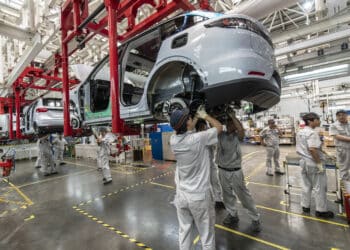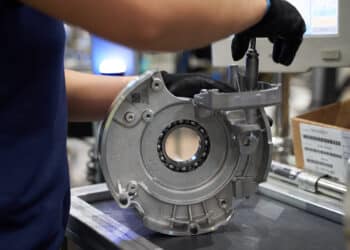Auto finance fraud up 16.5% to record $9.2B
Credit washing hit 1.7% in 2024, a 162% surge YoY
Auto fraud exposure hit a record high in 2024, spurred by affordability challenges and increasingly sophisticated fraud tactics.
Auto lenders’ total estimated loss exposure due to fraud hit $9.2 billion in 2024, up 16.5% year over year, outpacing previous estimates, according to risk management platform Point Predictive’s 2025 auto lending fraud trends report, released today. This is the highest exposure in dollars since the report was created in 2021.
The company’s Early Payment Default index, which tracks loans for which payments have stopped within the first six months, rose 10.6% YoY in 2024, according to the report.
Early payment defaults typically indicate fraud since the borrower at times never makes a payment, with about 70% of early payment defaults containing evidence of fraud, according to Point Predictive.
Fraud is up throughout the auto industry, outpacing credit card fraud, and other types, Mark Pregmon, vice president of consumer lending at USAA, said during a panel discussion at CBA Live 2025 recently.
““People have to make more to afford the more expensive cars. They’re piling on more debt. They want to hide that debt so they can get those cars.” — Frank McKenna, Point Predictive
Affordability concerns lead to credit washing
Affordability concerns have contributed to a rise in fraudulent activity, evident by a sharp increase in credit washing, Frank McKenna, chief strategist at Point Predictive, told Auto Finance News.
Credit washing is when credit repair companies assist consumers file false claims of identity theft to credit bureaus or the FTC to remove negative marks from the borrowers’ credit reports, making it easier to obtain credit, including an auto loan, McKenna said. In other words, credit washing can make a 500 FICO score look like a 700 FICO score, he said.
Applications that contained credit washing hit 1.7% in 2024, a 162% surge YoY, according to the report.
“There’s a lot of people out there working with these credit repair companies to clean their credit, so they can get loans,” McKenna said. “That’s indicative of the times. It is tougher to get loans that are affordable, so they’re going to these credit repair companies to get rid of the bad debts so they can get new cars.”
Though credit availability rose 3% in February, new-vehicle average transaction prices rose 1% YoY to $48,039, according to Cox Automotive, with looming tariffs expected to further increase vehicle prices.
Fraud drivers
Income and employment fraud counted as the largest source of fraud exposure in 2024, accounting for $3.9 billion, or 42% of total exposure, according to the Point Predictive report.
Other major fraud drivers included synthetic identity fraud — which involves the combination of false and real identity information — which represented $2.5 billion, or 27% of total fraud risk, and true name identity theft, which accounted for approximately $1.6 billion, or 18% of fraud risk.
True name fraud identity fraud is when a fraudster uses the stolen identity of a real person, McKenna said.
Though there are plenty of bad actors committing fraud, rising car prices are also pushing consumers to take on more debt, and some are resorting to fraud to qualify for loans, he said.
“People have to make more to afford the more expensive cars,” McKenna said. “They’re piling on more debt. They want to hide that debt so they can get those cars. The current economy plays a big role in it, but I also think the current conditions around fraud and scams period are causing a big part of it. We’re seeing just more shady activity in the world.”
Auto Finance Summit East 2025 is set for May 12-14 at the JW Marriott Nashville featuring fireside chats with Santander Consumer USA and Chase Auto. Visit autofinance.live for more information. Early-bird registration is available here.















